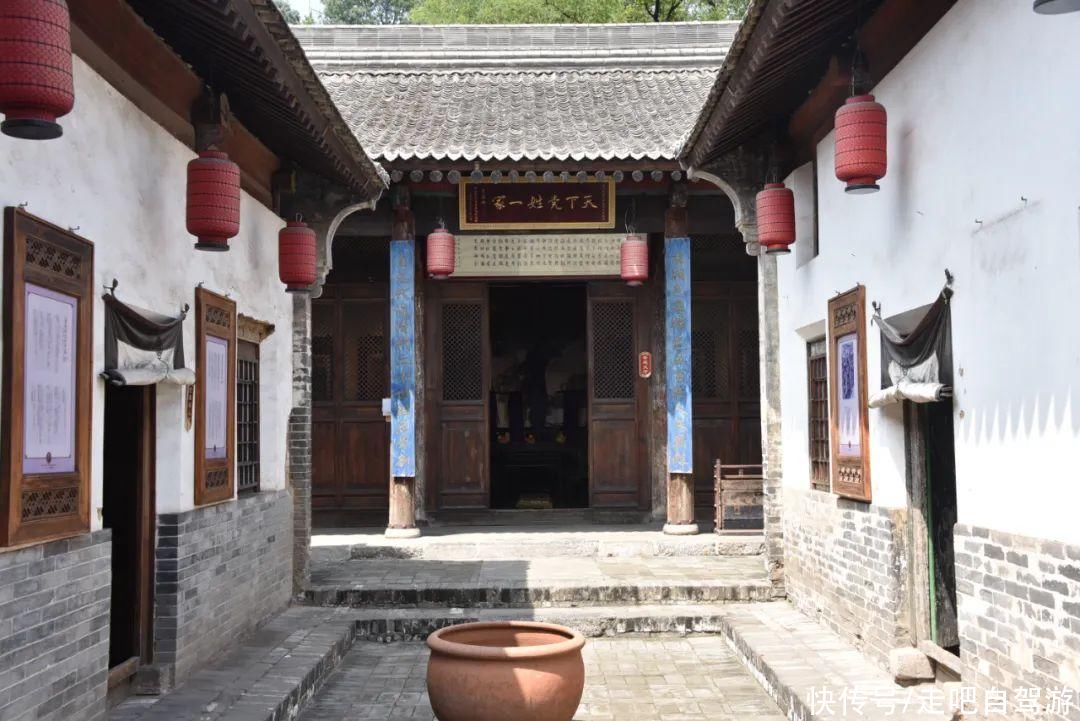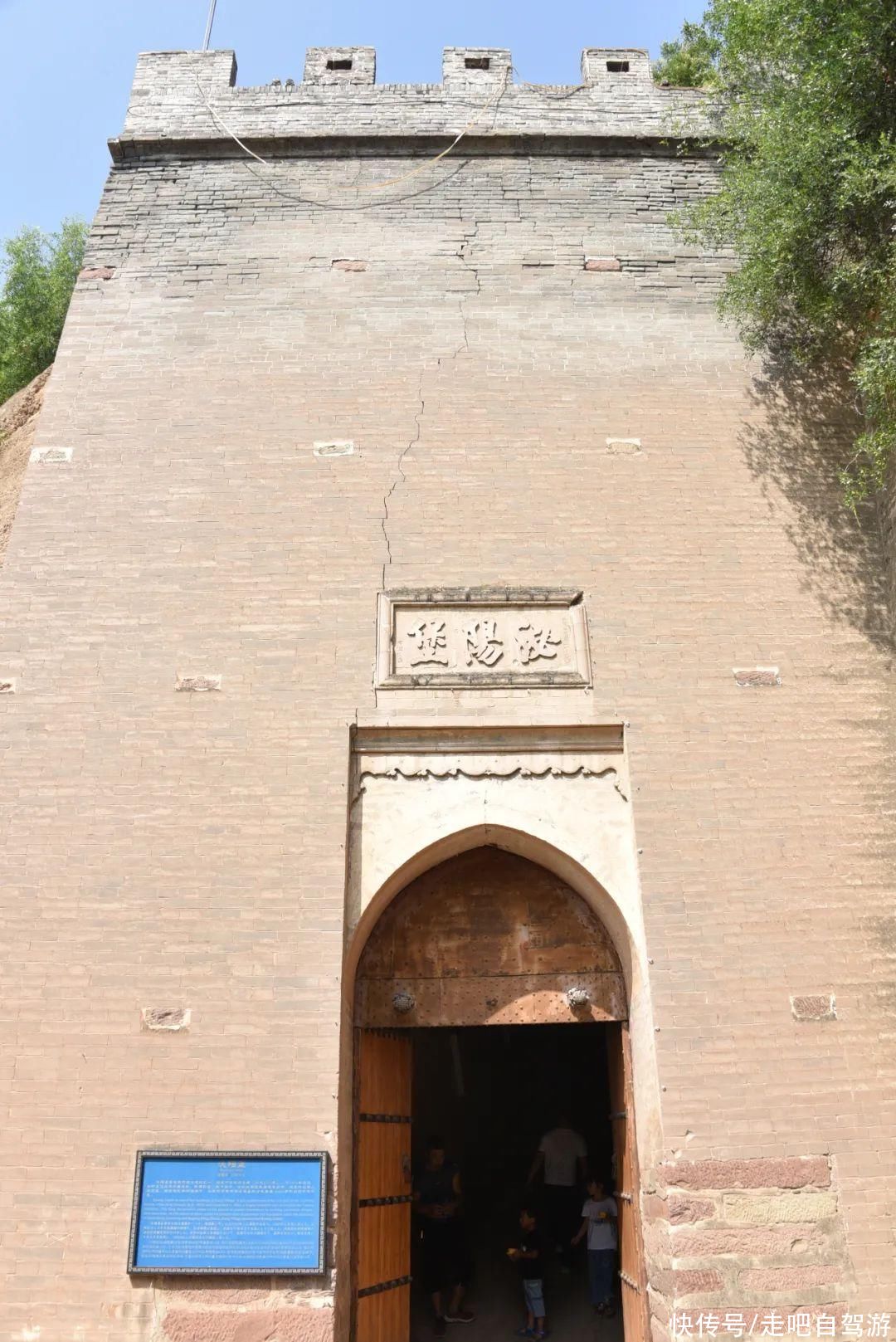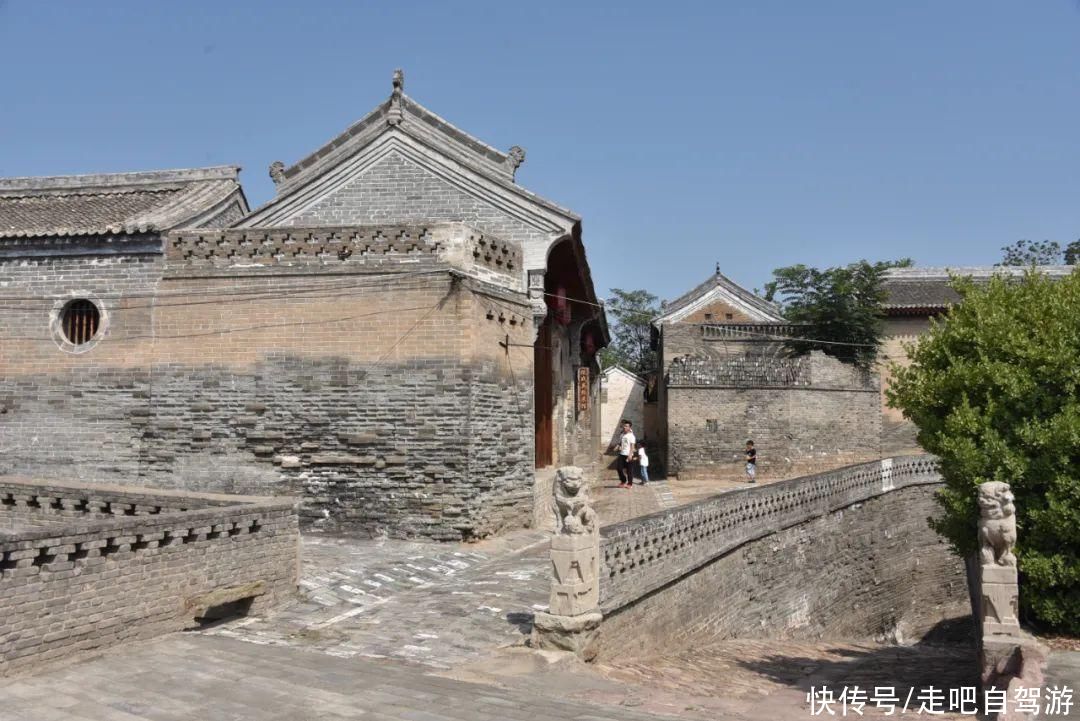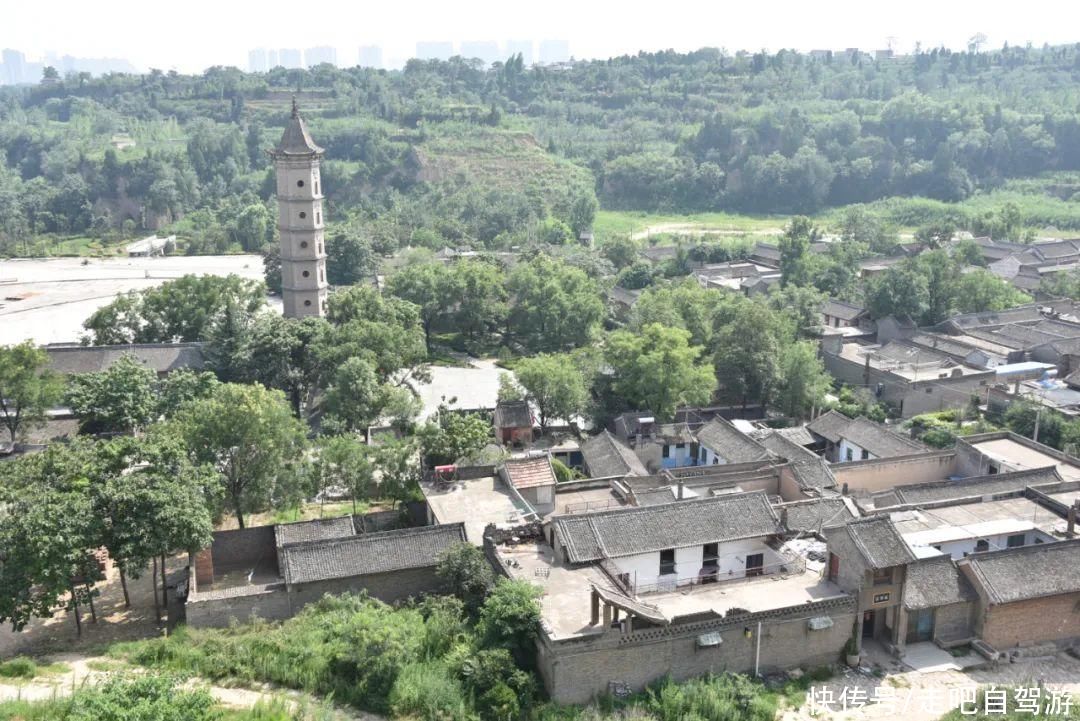An ancient village can be listed as a famous historical and cultural village in China, a national key cultural relic protection unit and a preliminary list of world cultural heritage at the same time. There are several “Miao Villages” and “Dong Villages” in the south, while the “Shan-Shaan Ancient Dwellings” in the north. There are two ancient villages in the “Shan-Shaan Ancient Dwellings” on the preliminary list of world cultural heritage, one is Ding Village in Shanxi, and the other is Shanxi Ancient Dwellings. It is Dangjia Village in Shaanxi Province, and two classic houses in the north. Dangjia Village in Hancheng City, Shaanxi Province is also known as “the living fossil of the ancient traditional civilization of eastern human beings”.
The location of Dangjia Village is very unique. The ancient village is located in a deep ditch. 3 kilometers, there is bleeding around the south of the village, forming a trend of relying on the plateau and the water.

The archway in Dangjia Village is different from Ding Village in Shanxi. For scenic spots with tickets, the regular price is 50 yuan, but when you come to the parking lot, nearby villagers will sell you cheap tickets. The actual measurement is also useful. Maybe the scenic spot has reached a tacit understanding with the villagers.

To enter the scenic spot, you need to walk downhill, you can see that the 700-year-old Dangjia Village is almost Well hidden in the ravine, more than 100 sets of courtyards are scattered, old and not dilapidated.

The monument of national key cultural relics protection unit can be seen on the downhill road. The ancient buildings of Dangjia Village are the first There are five batches of national key cultural relics protection units, and Dangjia Village is the first batch of famous historical and cultural villages in China.

Dangjia Village is not entirely surnamed Dang, but has two surnames, Dang and Jia. Because the surname of Dang lived earlier, it was called Dangjia Village.

An ancient village can be preserved for the following two reasons. One is traffic. Inconvenient, slow development, and forgotten; second, beautiful architecture, profound tradition, and protected. The Dangjia Village is obviously the latter factor in the majority.

And an ancient village is beautifully built, and the foundation of the deep tradition is the rich history of this village. , and even produced talents, thus driving the development of the entire village, and only spending real money to build exquisite dwellings and public buildings.

The ancestor of the party surname of Dangjia Village is called Dang Shuxuan, a native of Chaoyi, Shaanxi Province, and Yuan Zhishun In the second year (1331), he left his hometown and lived in Hancheng, where he opened a village and established his business. In the 24th year of Yuanzhizheng (1364), it was renamed Dangjiawan, so Dangjia Village is an ancient village with a history of nearly 700 years.

But the prosperity of Dangjia Village can be said to be brought by another surname Jia. Jia Botong, the first ancestor of Jia surname, was born in Hongdong County, Shanxi Province, and his family was very wealthy. Jia Botong came to Hancheng for business during the reign of Emperor Shun of the Yuan Dynasty (after 1333).

In the eighth year of Ming Hongzhi (1495) Jia surnamed fifth generation Jia Lian and party surnames Married and partnered to run a joint business, dividends were distributed according to shares, and the company “Hexingfa” was established.

In the fifteenth year of Chenghua in Ming Dynasty (1479), Jia Zhang, the sixth ancestor of Jia’s surname, moved to Dangjia Village.

In the three dynasties of Jiaqing, Daoguang and Xianfeng in the Qing Dynasty, Dangjia Village ushered in a new era in economic history. In the golden age, it is said that the darts carrying silver taels to their hometown are in an endless stream, known as “a thousand taels of silver every day”. Therefore, with this party bank branch, the villagers will be divided into silver according to their shares.

The economic foundation determines the superstructure, and only if you have money will you spend your time building the carved beams and picturesque buildings. Folk houses, instead of facing the loess and turning their backs to the sky, are just to fill the stomach.

Only with an economic foundation can we pursue higher spiritual wealth. Teach, the children compete to get the title.

In the Ming and Qing dynasties, Dangjia Village had a total of 5 jinshi and juren, and 5 scholars. 44, almost half of the households are famous.

There are people in the DPRK who are good at doing things, rich and talented, so Cixi appeared in the village The blessing of the queen mother is not uncommon.

With the continuous enrichment of the economic foundation and the increase of the population, Dangjia Village has become a There were three large-scale constructions in the Qing Dynasty. Among them, 14 new houses were built from the first year of Ming Zhengtong to Jingtai (1436-1456); 25 new houses were built from the 16th year of Chongzhen in Ming Dynasty to the 50th year of Emperor Kangxi of Qing Dynasty (1643-1711); (1736-1861) built a new house in 69 courtyards.

Up to now, there are still 123 courtyard houses and 11 ancestral halls, 25 an outpost.

It is just a pity that in the 1960s and 1970s, a considerable part of the construction quality was The high-quality halls, alleys, stone arches… were demolished and sold, resulting in irreparable losses.

But fortunately, in the 1980s and 1990s, the climax of rural reconstruction During the period, Dangjia Village adopted the practice of preserving the ancient appearance of the old village and creating a new village, so that the ancient village was completely preserved.

The friends in the south of this building may not understand, in fact, this is A well, the groundwater on the Loess Plateau is deep, so the well in Dangjia Village is a reel type.

And this cherishing stove squeezed between two residential houses can be seen in ancient villages in the north and south In public buildings, the ancients respected the written word, especially the scholars. They were not allowed to use the written paper for pasting or wrapping, nor could they be trampled on and discarded at will.

When it comes to the public buildings in Dangjia Village, there are four major highlights that cannot be missed. It is a housekeeping building, built in the seventh year of the Republic of China (1918), 14.5 meters high, four floors and four sides. It is located in the center of Dangjia Village. It is a watchtower for defense facilities.

The second is Wenxing Pavilion, built in the third year of Emperor Yongzheng of Qing Dynasty (1725), There are six floors and six sides. The first floor is dedicated to the sage Confucius and his 10 disciples. The second, third and fourth floors are dedicated to Yan Yuan, Zengzi, Zisi (the grandson of Confucius) and Mencius. The fifth floor is dedicated to the tablet of Emperor Wenchang.

The third is the filial piety monument, which is equivalent to the chastity archway, which is a bluestone pedestal The stele building is more than two feet high. The top of the building is sloping on both sides. The structure under the eaves is imitation wood brick carving. Below the bucket arch is the banner “Women Fang Fang”. composition.

The couplet on the stele is “Dedicated to humiliating him, restraining harmony and filial piety; “Yi Er, carrying Xi Qi Guang”, the upper couplet means that the stele owner Niu Ru Ren lost her husband at an early age, was observant of festivals, and was filial to the elders, and was harmonious and friendly with his family and neighbors. The lower couplet means that the words of the emperor’s commendation are right in front of you, which is the supreme honor bestowed on the owner of the monument.

The owner of the monument is Dang Weilie’s widow, a widow. She was a widow at the age of 16. She served her parents-in-law at home for decades until her death, when Emperor Guangxu found out, he issued an imperial decree to erect a monument for her in recognition of her. In fact, in addition to this festival, there are two stone chastity arches in the village, one at the top of the east slope, which collapsed earlier, and the other at the bottom of the west slope, which was demolished in the 1950s.

The fourth major attraction in the village, and one that is often missed by tourists is Biyang Fort, Biyang Fort is located in the corner of the village, it is easy to pass by if you are not careful.

Biyang Fort was built in the third year of Qing Xianfeng (1853), which is the party More than 500 years after the establishment of Jiacun, the Taiping Heavenly Kingdom movement was in full swing during the Xianfeng years. There were often Nian troops in Shanxi and Shaanxi. , as the so-called “the Nian army comes, build the village”.

So the villagers raised more than 18,000 taels of silver, and on the three sides of the empty Castles are built on high cliffs, surrounded by walls, with fixed forts and movable cannons.

The entire Biyang Fort and Dangjia Village still have only one passage, namely the secret passage of the city gate. The city gate is also very strong, it can be said that one husband is the gatekeeperDo not open.

Once there was a crime, the villagers would run to Biyang Fort to hide, and since then It formed a pattern of unity of villages and villages, and the three words “House in Peace” also fully embodies the meaning of this castle.

After 1978, the rural economy developed and the population increased, and the original housing was no longer enough for distribution , and promoted a building boom. However, the houses in Dangjia Village are of high quality and still have high habitability. Coupled with the influence of traditional concepts, the villagers chose to build a new village on the periphery of the original village, so that this 700-year-old village can be completely preserved.
Although Dangjia Village on the loess slope is not as dynamic as the ancient villages in the south, surrounded by mountains and waters, this classic northern residential building complex is like a village buried on the loess. A living fossil truly reflects the appearance of Shanshan villages in the Ming and Qing Dynasties. No wonder Dangjia Village has so many honors and deserves to be called “the treasure of the world’s dwellings”.